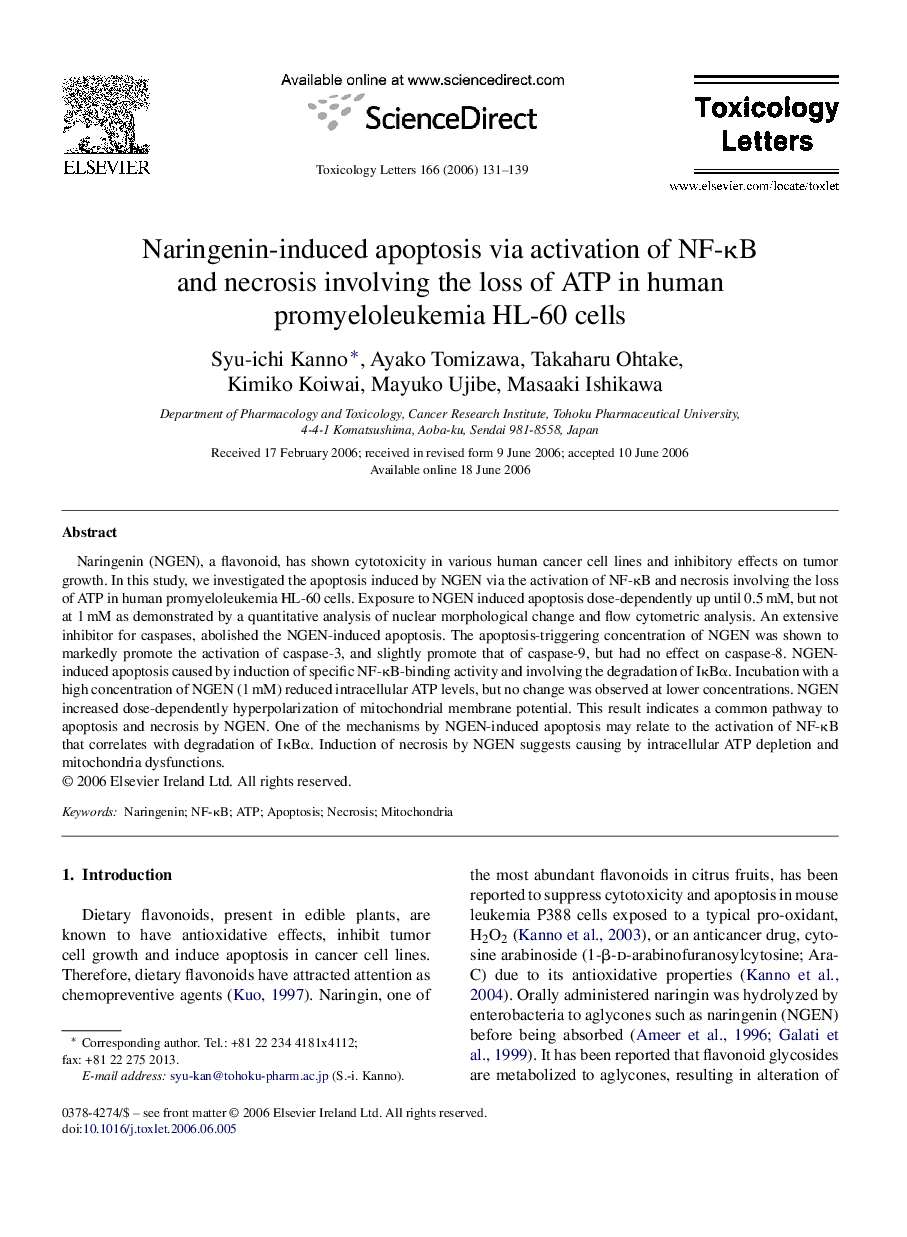| Article ID | Journal | Published Year | Pages | File Type |
|---|---|---|---|---|
| 2601622 | Toxicology Letters | 2006 | 9 Pages |
Naringenin (NGEN), a flavonoid, has shown cytotoxicity in various human cancer cell lines and inhibitory effects on tumor growth. In this study, we investigated the apoptosis induced by NGEN via the activation of NF-κB and necrosis involving the loss of ATP in human promyeloleukemia HL-60 cells. Exposure to NGEN induced apoptosis dose-dependently up until 0.5 mM, but not at 1 mM as demonstrated by a quantitative analysis of nuclear morphological change and flow cytometric analysis. An extensive inhibitor for caspases, abolished the NGEN-induced apoptosis. The apoptosis-triggering concentration of NGEN was shown to markedly promote the activation of caspase-3, and slightly promote that of caspase-9, but had no effect on caspase-8. NGEN-induced apoptosis caused by induction of specific NF-κB-binding activity and involving the degradation of IκBα. Incubation with a high concentration of NGEN (1 mM) reduced intracellular ATP levels, but no change was observed at lower concentrations. NGEN increased dose-dependently hyperpolarization of mitochondrial membrane potential. This result indicates a common pathway to apoptosis and necrosis by NGEN. One of the mechanisms by NGEN-induced apoptosis may relate to the activation of NF-κB that correlates with degradation of IκBα. Induction of necrosis by NGEN suggests causing by intracellular ATP depletion and mitochondria dysfunctions.
